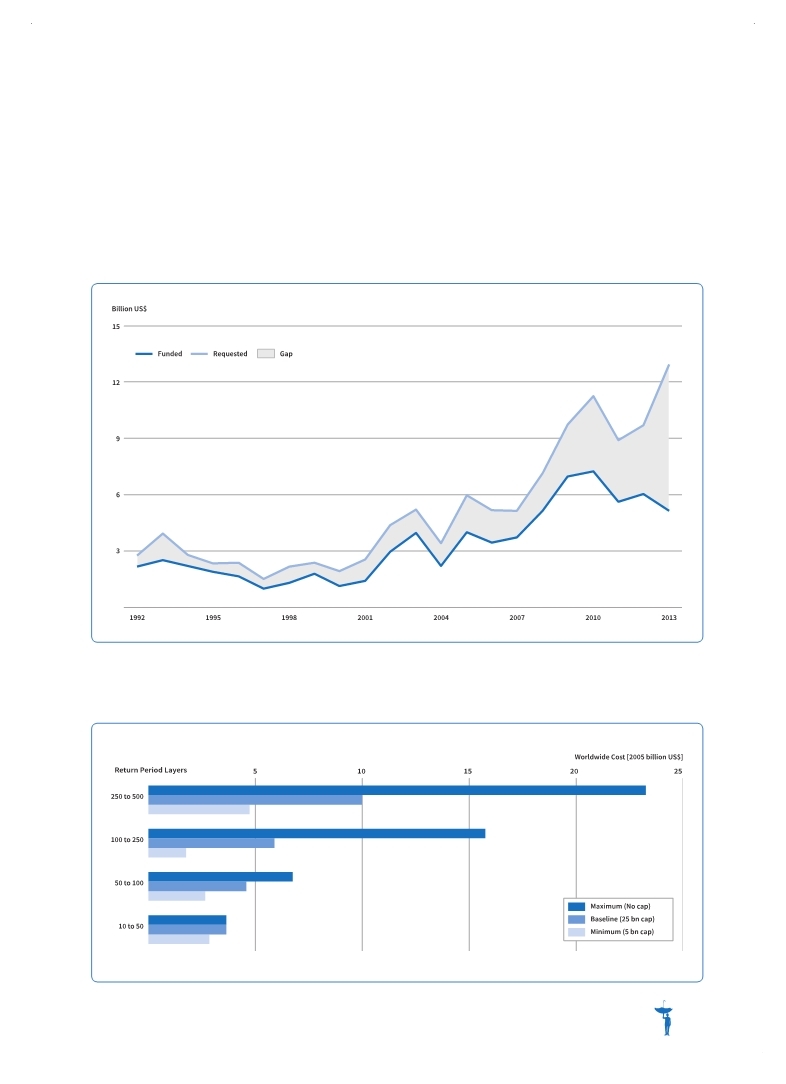 |
Global Assessment Report on Disaster Risk Reduction 2015
Making development sustainable: The future of disaster risk management |
 |
Global Assessment Report on Disaster Risk Reduction 2015
Making development sustainable: The future of disaster risk management |
|
|

109
(Source: UNOCHA, 2014a
UNOCHA (United Nations Office for the Coordination of Humanitarian Affairs). 2014a,An Overview of Global Humanitarian Response 2014. . (Source: Hochrainer-Stigler et al., 2014
Hochrainer-Stigler, Stefan, Reinhard Mechler, Georg Pflug and Keith Williges. 2014,Funding public adaptation to climate-related disasters, Estimates for a global fund. Global Environmental Change 25 (2014): 87-96.. . Figure 5.9 Funding requested and received through United Nations appeals (CAP and flash appeals)
Figure 5.10 Resource gaps for different risk layers at the global level
a return period of 10 to 50 years would require more than US$2.5 billion per year globally (Hochrainer-Stigler et al., 2014
Hochrainer-Stigler, Stefan, Reinhard Mechler, Georg Pflug and Keith Williges. 2014,Funding public adaptation to climate-related disasters, Estimates for a global fund. Global Environmental Change 25 (2014): 87-96.. . Assuming there is no cap on payments that can be made to countries, the funding requirements grow dramatically, ranging from US$3.3 billion per year for a loss with a 10 to 50-year return period to more than US$20 billion per year for a loss with a 250 to 500-year return period.
|
 
Page 1Page 10Page 20Page 30Page 40Page 50Page 60Page 70Page 80Page 90Page 99Page 100Page 101Page 102Page 103Page 104Page 105Page 106Page 107Page 108Page 109Page 110->Page 111Page 112Page 113Page 114Page 115Page 116Page 117Page 118Page 119Page 120Page 121Page 122Page 123Page 130Page 140Page 150Page 160Page 170Page 180Page 190Page 200Page 210Page 220Page 230Page 240Page 250Page 260Page 270Page 280Page 290Page 300Page 310
|
|
 
|
 
|
